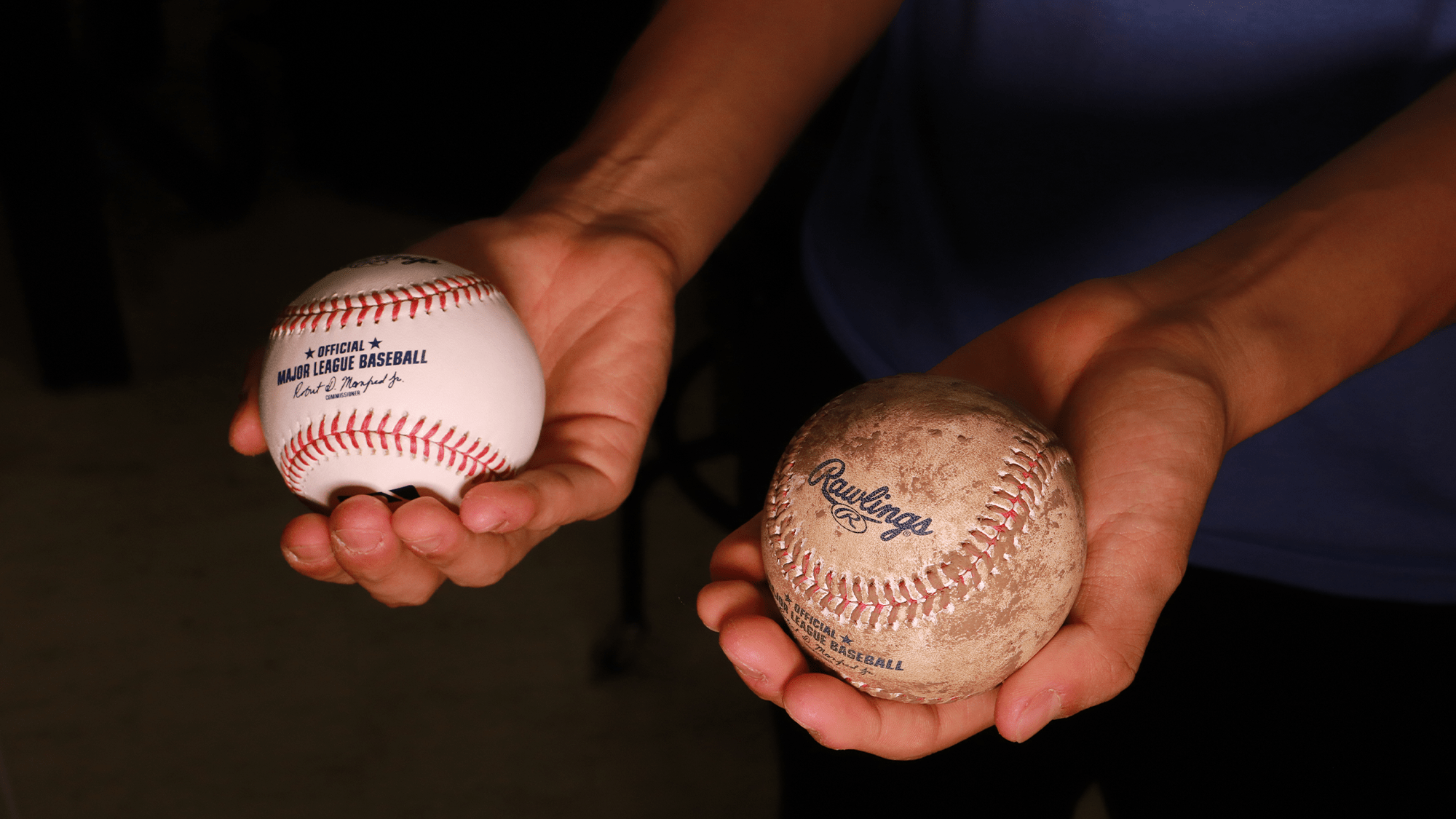While it can’t be credited with winning the Los Angeles Dodgers their eighth World Series championship, baseball’s “magic mud” is the stuff of lore. Each Major League Baseball (MLB) team’s equipment manager applies it to every game ball. It improves the grip on the ball, can dull the shine on a new ball, and keep it from getting damaged.
Now, the unique properties of this naturally occurring substance have been scientifically quantified. A study published November 4 in the journal Proceedings of the National Academy of Sciences (PNAS) details what makes it so special.
[Related: Baseball’s black magic: How psychology, math, and culture created a curse-ridden sport.]
“It feels like sandpaper when you hold it, but then you can smear it like a cream,” study co-author and University of Pennsylvania soft matter scientist Shravan Pradeep tells Popular Science.
Lena Blackburne Baseball Rubbing Mud has been harvested since the 1930’s by the Bintliff family in a secret location along the Delaware River estuary in southern New Jersey.
“When you take a dollop out of it and you put it on your hand, it’s just like a nice facial cream and feels smooth,” study co-author and Penn geophysicist Douglas J. Jerolmack tells Popular Science. “It doesn’t feel gritty at all when it’s a dollop of paste in your hand. It’s after you spread it that it dries and feels gritty.”
In 2019, sportswriter Matthew Gutierrez asked the group at Penn to analyze the mud’s composition and flow behavior. He wanted to see if the mud actually makes balls perform better, as players claim. The team provided a quick analysis, but it wasn’t close to scientific proof. Still, they were interested in whether this mud went beyond athlete superstition.

By 2021, Pradeep devised three sets of experiments to determine if the mud actually works that are detailed in the new study. One experiment measured its spreadability, the second measured its stickiness, and the third measured the mud’s effect on a baseball’s friction against the pitcher’s fingertips.
Spreadability and stickiness could be measured by two existing pieces of equipment–rheometer and atomic force microscopy. The rheometer measures spreadability.
“We smeared the material between two plates and rotated them so we could see how it flows and measure the viscosity,” explains Pradeep.
Atomic force microscopy looks at the material’s stickiness on an atomic level and gives a sense of how well it works to improve grip.
However, to measure the mud’s frictional effects, the team needed to build some new kind of experimental setup that needed to mimic the properties of human fingers. They created a rubber-like material with the same elasticity as human skin. They then covered the material in an oil similar to what is secreted by human skin. The team carefully and systematically rubbed the oiled material against strips of baseballs in the manner specified by MLB.
“That’s the beauty of all these three instruments. They measure different things and various parts of the material,” study co-author and Penn fluid dynamicist Paulo Arratia tells Popular Science.
According to the team, these instruments revealed the mud what pitchers have been saying. It has exactly the right amounts of stickiness, spreadability, and friction to allow them to get a good grip on the ball. What surprised the team was the mud’s consistency and the combination of these three properties coming together in the right amounts.
[Related: Hotter weather could be changing baseball.]
“It’s the fact that it spreads as if there’s no sand in it at all. But once it dries, the sparse amount of sand that is there provides this friction effect,” says Jerolmack. “It has just the right proportions of fine, sticky particles and sparse amounts of large, angular particles. We just didn’t expect to see them together.”
MLB has considered replacing the magic mud with synthetic lubricants. However, none of them have replicated the natural mud’s properties.
“We have a lot of respect for the family who maintains this working knowledge and produce a consistent product that feels the same, that the pitchers can tell they have good sense in their hand,” says Arratia.
The researchers hope their work can lead to more study of mud properties understanding erosion. It also furthers this study of “geomimicry,” or looking to natural substances to make more sustainable materials.
“Nature creates these materials and we were able to look at their mechanical properties,” says Pradeep. “So there are other materials out there which we don’t know what they do, but have exotic mechanical or transport properties that we might want to look at. They could be an inspiration for a different group of lubricants or gripping materials to engineer them.”
The post Baseball’s legendary ‘magic mud’ finally analyzed by scientists appeared first on Popular Science.

